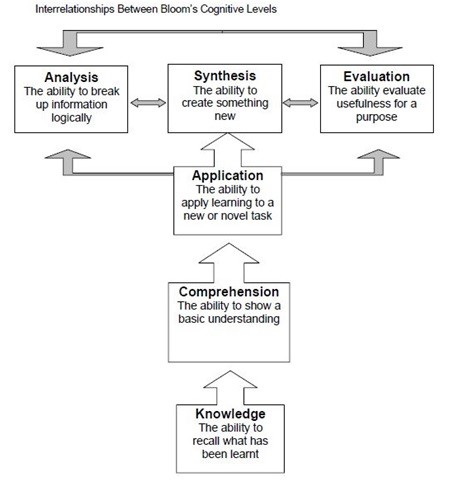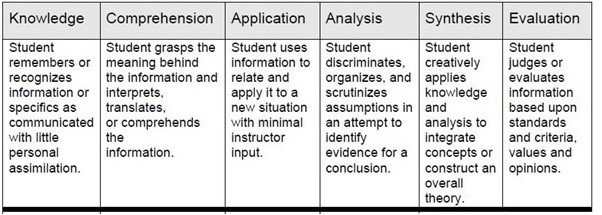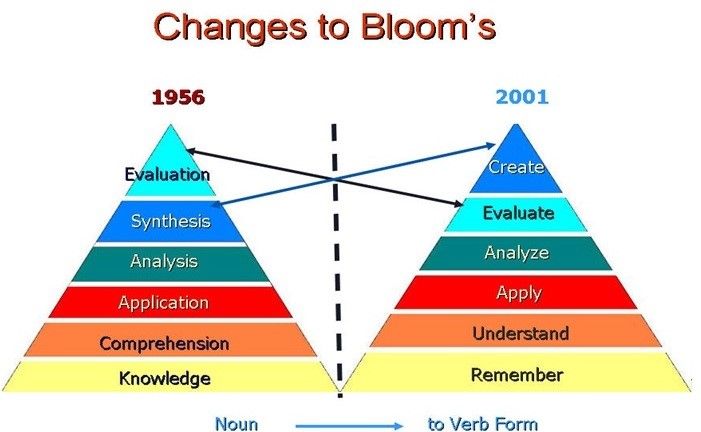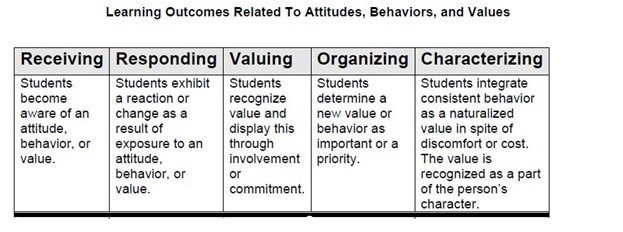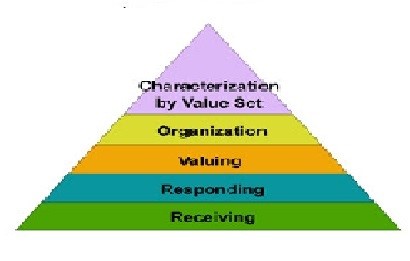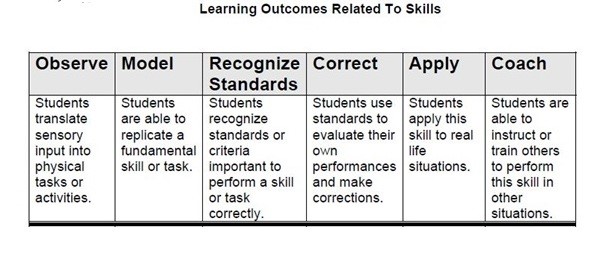Dr. V.K.Maheshwari, M.A(Sociology, Philosophy) B.Sc. M. Ed, Ph. D
Former Principal, K.L.D.A.V.(P.G) College, Roorkee,
Education is a purposeful and ethical activity and each activity as aspect has some aim before it. So, there is a close relationship between an activity and its aim.
An aim is a conscious purpose which we set before us, while launching upon any activity. Just like that education is also unthinkable without aims. If there are no aims the educational process would not take place because an aim is a pre-determined goal which inspires the activity of education.
Aims act as basic directions while conducting a research or carrying out a project. It can be chunked into various objectives which help in reaching the aim easily. It has a long range perspective which reflects aspirations and ambition of the entity.
In the words of John Dewey “An aim is a foreseen end that gives direction to an activity or motivates behavior”.
Importance of Educational Aims
All our methods of teaching, our curriculum and our system of evaluation are shaped and molded according to our aim of education. It is the ignorance of right aims that has vitiated our educational system, its methods and its products, and has successfully resulted in the physical, intellectual and moral weaknesses of the race. There is a great necessity of aims in education because of the following reasons:
1.To direct efforts: Educational aims keep the teacher and the taught on the right track. They provide a line of action and guidance to the teachers. They give direction and zest to the work of the pupils. Educational aims help us to avoid wastage in time and energy.
2.To evaluate ourselves : The aim is a yard-stick with which we can measure our success and failure. They are necessary to assess the outcome of the educational process.
3. To provide efficient administration : Aims are necessary for efficient school administration and organization. They help the school authorities in organizing, equipping, and administering the school.
Factors determining Educational Aims
Many factors have been contributing and do contribute to the determining of educational aims. These factors touch every phase of human life that was, that is or what will be.
1.Factors associated with Philosophy of life : Aims of education are always influenced by the philosophy of life of the people of that country.
2. Factors associated with Psychology : The aims of education should be according to the nature, needs, requirements, inspiration and interest of the learners.. The aims of education should relate knowledge with the activities of life.
3. Factors associated with Socio-economic problem : Besides, political ideologies, the social economic problems of a country, determine the aims of education
4. Factors associated with Political ideology : Political ideologies also help in determining the aims of education. The aims of education are fixed in accordance with the ideology of the state to uphold the right of state.
5. Factors associated with exploration of knowledge : Education has also to give due consideration to the advancements in knowledge as for as the question of educational aims are concerned.
6. Factors associated with Culture : It is the most important function of the education to develop and preserve the cultural heritage. The changing and developing pattern of cultural factors directly influence the aims of education.
Difference between Aim and Objective
The word aim is often misconstrued with objective, as they talk about what an individual or entity may want to achieve.
The following points are important, so far as the difference between aim and objective is concerned:
- The term aim is described as the ultimate goal, which an individual or the entity strive to achieve. The objective is something a person/entity seeks to achieve, by continuously chasing it.
- The aim of the entity reflects its long-term outcomes while its objectives indicate the short term targets of the entity. Aims are long term statement of purpose that may be achieved over a long period of time, say one or more years. Objectives are bound in a short and specified time say one teaching learning period or during teaching learning of one chapter.
- Philosophy provides base to aims, while psychology provides base to objectives.
- Aims are broader in sense. You may need to state a number of objectives to achieve one aim. In this sense objectives are narrower.
- Aims relates with general direction or intent of an individual/ institution. Objectives are specific goal of an individual or institution.
- Aim is a foreseen end. Objectives are influenced by aims The aim is related to the mission and purpose whereas objectives are concerned with the achievements .
- Aim answers the question, what is to be achieved? Unlike objective which answers, How it is to be achieved?
- Aims are not time bound, i.e. there is no time frame within which the aim of the entity must be achieved as it is hard to say accurately, how much time it will take to achieve. On the other hand, objectives are always accompanied with a time frame, within which it must be achieved.
- The most important difference between these two is on measurability. Aims may or may not be easily observable and measurable.
BLOOM’S TAXONOMY OF EDUCATIONAL OBJECTIVES
Bloom’ Benjamin’s has put forward a taxonomy of educational objectives, which provides a practical framework within which educational objectives could be organized and measured. In his taxonomy Bloom divided educational objectives into three domains. These are:
- Cognitive Domain (Head oriented )
- Affective Domain ( Heart oriented )
- Psycho-motor Domain ( Hand oriented )
The Cognitive Domain
The cognitive domain involves those objectives that deal with the development of intellectual abilities and skills. These have to do with the mental abilities of the brain
Learning outcome in Cognitive Domain
The domain is categorized into six hierarchical levels , comprehension, application, analysis, synthesis and evaluation. These levels are of hierarchical and increasing operational difficulties that achievement of a higher level of skill assumes the achievement of the previous levels. This implies that a higher level of skill could be achieved only if a certain amount of ability called for by the previous level has been achieved.
Knowledge Level
Knowledge or memory is the first, the lowest and the foundation for the development of higher order cognitive skills. It involves the recognition or recall of previous learned information. For measurement purposes, memory or knowledge involves bringing to mind the appropriate material. This cognitive level emphasizes the psychological process of remembering. Knowledge is remembering or retrieving previously learned material.
Knowledge can also be classified into the following:-
i. Specifics (taxonomy, facts, definitions etc.)
ii. Ways and means of dealing with specifics (rules)
iii. Conventions (styles, symbols practices, allegories)
iv. Trends and sequences (order or sequence)
v. Classification and categories (classes, sets, divisions)
vi. Criteria (established facts and criteria)
vii. Techniques and procedures or Methodology.
viii. Universals and abstractions.
ix. Knowledge of principles and generalizations (laws, formulas)
x Knowledge of theories and structures (models, philosophies)
Comprehension Level
Comprehension is the ability to grasp or construct meaning from material. Comprehension is all about internalization of knowledge. It involvers making memory out of what is stored in the brain file. It is on this basis that what is stored inthe brain can be understood and translated, interpreted or extrapolated. It is only when you have known something that you can understand it.
Comprehension level is made up of the following:
i. Translation: which involves the ability to understand literal messages across communication forms, changing what is known from one form of communication to another e.g. from words to numbers, graphs, maps, charts, cartoons, pictures, formulas, symbols, models, equations etc.
ii. Interpretation: which goes beyond mere literal translation to identification of inter-relationships among parts and components of communication and interpreting and relating these to the main components e.g. to interpret a chart or graph etc.
iii. Extrapolation: which involves the ability to draw implications and ability to identify and continue a trend, isolate or detect consequences, suggest possible meaning and estimate possible effect.
Application Level
As per the hierarchic nature of the instructional objectives it is not possible to understand unless it is known.. It also means that one cannot apply what he/she do not understand. The use of abstractions in a concrete situation is called application. These abstractions can be in the form of general ideas, rules, or procedures or generalized methods, technical terms, principles, ideas and theories which must be remembered, understood and applied. Understanding before correct application is an essentiality.
In application the learner uses what he knows to solve a new problem, or in a new situation. Application involves the ability to the learner to grasp exactly what the problem is all about and what generalization or principles are relevant, useful, or pertinent for its solution. Application is the ability to use learned material, or to implement material in new and concrete situations.
Analysis Level
- It is the breaking down of communication into its constituent parts or elements
- It establish the relationship between ideas expressed to be clear or explicit.
- It is the ability to break down or distinguish the parts of material into its components.
- Its organizational structure may be better understood.
The components here include:
i. Analysis of Elements: which is concerned with the ability to identify the underlying elements such as assumptions, hypothesis, conclusions, views, values, arguments, statements etc and to determine the nature and functions of such elements?
ii. Analysis of Relationship: which involves trying to determine how the elements identified are related to each other? For instance, how does the evidence relate to the conclusion?
iii. Analysis of Organizational principles: which involves determining the principles or system of organization which holds the different elements and parts together? It involves finding the pattern, the structure, systematic arrangements, point of view, etc.
Synthesis Level
- Contrary to analysis which involves breaking down of materials, communication, object etc,
- In synthesis building up or putting together elements is processed.
- It is concerned with the ability to put parts of knowledge together to form a new knowledge.
- In it parts, pieces and components in order to form a unique whole or to constitute a new form, plan, pattern or structure.
- It involves divergent thinking. It calls for imaginative, original and creative thinking.
- It calls for creative answers to problems and for the development of questioning mind, spirit of inquiry or inquisitive mind. It requires fluency of novel ideas and flexible mind.
Evaluation Level
- It is the top most level in the hierarchy.
- Evaluation as a cognitive objective involves the learners’ ability to organize his thought and knowledge
- It helps in reaching a logical and rational decision which is defendable.
- It involves making a quantitative or qualitative judgment about a piece of communication, a procedure, a method, a proposal, a plan etc.
- It is the ability to judge, check, and even critique the value of material for a given purpose.
Evaluation is the most complex of human cognitive behaviour. It embodies elements of the other five categories. (knowledge, comprehension, application, analysis and synthesis)
.
Action Verbs in Cognitive Domain
| OBJECTIVES | ACTION VERBS |
| Knowledge | Know, identify, relate, list, define, recall, memorize, repeat, record, name, recognize, acquire
|
| Understanding | Restate, locate, report, recognize, explain, express, identify, discuss, describe, review, Infer, conclude, illustrate, interpret, draw, represent, and differentiate
|
| Application | Apply, relate, develop, translate, use, operate, organize, employ, restructure, interpret, demonstrate, illustrate, practice, calculate, show, exhibit, dramatize |
| Analysis | Analyze, categorize, compare, , differentiate, deduce, detect, discover, discriminate, dissect, examine, experiment, inquire, inspect, investigate, probe, scrutinize, Separate, survey
|
| Synthesis | Compose, produce, design, assemble, create, prepare, predict, modify, tell, plan,
Invent, formulate, collect, set up, generalize, , combine, relate, Propose, develop, arrange, construct, organize, originate, derive, write, propose |
| Evaluation | Judge, assess, compare, evaluate, conclude, measure, deduce, argue, decide,
Choose, rate, select, estimate, validate, consider, appraise, value, criticize
|
Revised B.S.Bloom Taxonomy of Instructional Objectives
Anderson and Krathwohl in the year 1995-2000 revised the taxonomy of instructional objectives previously propounded by Bloom. Anderson and Krathwohl’S Taxonomy
In 1956, Benjamin S. Bloom classified domains of human learning into three parts — cognitive (knowing; related to head), affective (feeling; related to heart), and psychomotor (doing; related to hand) as the educational objectives. Bloom’s taxonomy is a model of classification of thinking into multilevels in increasing order of complexities. As a result of this classification, a series of taxonomies was obtained in each domain that provided a means of expressing qualitatively different levels of thinking of learners.
In the following table are the two primary existing taxonomies of cognition. The one on the left, entitled Bloom’s, is based on the original work of Benjamin Bloom and others as they attempted in 1956 to define the functions of thought, coming to know, or cognition. This taxonomy is over 50 years old.
Table – Bloom vs. Anderson/Krathwohl. Visual comparison of the two taxonomies
One of the things that clearly differentiates the new model from that of the 1956 original is that it lays out components nicely so they can be considered and used, and so cognitive processes as related to chosen instructional tasks can be easily documented and tracked. This feature has the potential to make teacher assessment, teacher self-assessment, and student assessment easier or clearer as usage patterns emerge.
The primary differences are not just in the listings or rewordings from nouns to verbs, or in the renaming of some of the components, or even in the repositioning of the last two categories. The major differences in the updated version is in the more useful and comprehensive additions of how the taxonomy intersects and acts upon different types and levels of knowledge — factual, conceptual, procedural and meta-cognitive.
Affective Domain (feelings, emotions and behaviour, ie., attitude, or ’feel’)
Previously the educationists never encourage emotionalism in education. They believe that intellectualism had nothing to do with the learner’s interests, emotions or impulses. Today, they have acknowledge that the learner’s feelings and emotions are equally important in education. In the year 1975 Tanner and Tanner insist that the primary goals of learning are affective. They are of the opinion that learners should not learn what is selected for them by others. This is because it amounts to imposition on the learners of other peoples values and purposes.
Krathwohl’s affective domain taxonomy is perhaps the best known of any of the affective taxonomies. “The taxonomy is ordered according to the principle of internalization. Internalization refers to the process whereby a person’s affect toward an object passes from a general awareness level to a point where the affect is ‘internalized’ and consistently guides or controls the person’s behavior .
The function of the affective domain in the instructional situation pertains to emotions, the passions, the dispositions, the moral and the aesthetic sensibilities, the capacity for feeling, concern, attachment or detachment, sympathy, empathy, and appreciation.
Affective domain is generally covert in behaviour. The educational objectives here vary from simple attention to complex and internally consistent qualities of character and conscience.
Affective domain has five hierarchical categories. You remember that the cognitive domain has six hierarchical levels. Specifically, the levels in affective domain fall into these levels:
Receiving
This is the lowest level of the learning outcomes in the affective domain. It means attending. It is the learner’s willingness to attend to a particular stimulus or his being sensitive to the existence of a given problem, event, condition or situation. The learner is sensitized to the existence of certain phenomena; that is, that she/he be willing to receive or to attend to them.
Receiving has three sub-levels. These are:
| Receiving
|
Awareness: |
| Willingness: | |
| Controlled or selected attention: |
Awareness: which involves the conscious recognition of the existence of some problems, conditions, situations, events, phenomena etc. take for instance as a teacher, you come into your class while the students are making noise. You will notice that the atmosphere will change. This is because the students have become aware of your presence. They are merely aware.
ii. Willingness: This is the next stage which involves the ability to acknowledge the object, event, problem instead of ignoring or avoiding it. The students in your class kept quite because they noticed and acknowledged your presence. If they had ignored your presence they would continue to make noise in the class.
iii. Controlled or selected attention: This involves the learner selecting or choosing to pay attention to the situation, problem, event or phenomenon. When you teach in the class, the learner is aware of your saying or the points you are making. In that case hewill deliberately shut off messages or speeches or sounds asnoises. Receiving in a classroom situation involves getting, holding and directing the attention of the learners to whatever the teacher has to say in the class.
Responding
Here the learner responds to the event by participating. . Attends and reacts to a particular phenomenon. He does not only attend, he also reacts by doing something. Active participation on the part of the learners.
Learning outcomes may emphasize:
- Compliance in responding,
- Willingness to respond,
- Satisfaction in responding (motivation).
Responding has three sub-levels too. These are:
- Acquiescence in responding: which involves simple obedience orcompliance.
- Willingness to respond: This involves voluntary responses to a given situation.
- Satisfaction in response: if he is satisfied with the response he enjoys reacting to the type of situation.
Valuing
Valuing is related with the worth or value or benefit which a leaner attaches to a particular object, phenomenon ,behaviour or situation. This ranges from simple acceptance to the more complex state of commitment This ranges in degree from mere acceptance of value or a desire to improve group skills to a more complex level of commitment or an assumption of responsibility for the effective functioning of the group.
There are three sub-levels of valuing:
| Valuing
|
Acceptance of a value |
| Preference for a value | |
| Commitment to a value |
i. Acceptance of a value: This is a situation where the learner believes tentatively in a proportion, doctrine, condition or situation.
ii. Preference for a value: In this case the learner believes in the desirability or necessity of the condition, doctrine, proposition etc. and ignores or rejects other alternatives and deliberately looks for other people views where the issues are controversial, so as to form his own opinion.
iii. Commitment to a value: In this stage the learner is convinced and fully committed to the doctrine, principle or cause. In consequence, the learner internalizes a set of specific values, which consistently manifest themselves in his event behaviour, attitudes and appreciation.
Organization
Here the learner starts to bring together different values as an organized system. He determines the interrelationships and establishes the order of priority by comparing, relating and synthesizing the values. He then builds a consistent value system by resolving any possible conflicts between them. He has to organize the values into a system in order to decide which value to emphasis .Organizes values into priorities by contrasting different values and, resolving conflicts between them, and creating an unique value system. The emphasis is on comparing, relating, and synthesizing values.
There are two sub-levels of organization . These are:
i. Conceptualization of a Value
This involves the understanding of the relationship of abstract elements of a value to these already held or to new values which are gaining acceptance.
ii. Organization of Value System?
This involves the development of a complex value system, which includes those values that cannot be compared for the purpose of making choices in order to promote public welfare, instead of the sheer aggrandizement of special personal interest.Recognizes the need for balance between freedom and responsible behavior.
Characterization by a Value or a Value Complex
Here the person acts consistently in accordance with such values, beliefs or ideals that comprise his total philosophy or view of life. The behavior is pervasive, consistent, predictable, and most importantly, characteristic of the learner. Instructional objectives are concerned with the student’s general patterns of adjustment in personal, social, emotional domain.
There are two levels Value Complex of :
i. Generalized set: This involves a situation where the orientation of the individual enables him to reduce to order a complex environment and to act consistently and effectively in it. There may be room for the individual to revise his judgements and to change his behaviour as a result of available new and valid evidence.
ii. Characterization: In this case, the internalization of a value system is such that the individual is consistently acting in harmony with it. The value system regulates the individual’s personal and civil life according to a code of behaviour based on ethical principles.
Psychomotor domain (manual and physical skills, ie., skills, or ’do’)
Psychomotor objectives are those specific to discreet physical functions, reflex actions and interpretive movements. Traditionally, these types of objectives are concerned with the physically encoding of information, with movement and/or with activities where the gross and fine muscles are used for expressing or interpreting information or concepts. This area also refers to natural, autonomic responses or reflexes.
It means that the instructional objectives make performance skills more prominent. The psychomotor domain has to do with muscular activities.
The psychomotor domain includes physical and motor (or muscular) skills. Every act has a psychomotor component. In the learning situation there is again a progression from mere physical experience – seeing, touching, moving etc. – through the carrying out of complex skills under guidance, to the performance of skilled activities independently.
Psychomotor domain is sub divided into hierarchical levels. The six levels from simplest to most complex are:
(i)Reflex movements
(ii) Basic Fundamental movements
(iii) Perceptual abilities
(iv) Physical abilities
(v) Skilled movements and
(vi) Non-discursive communication
Reflex Movements:
At the lowest level of the psychomotor domain is the reflex movements which every normal human being should be able to make.
Reflex movements are defined as involuntary motor responses to stimuli. They form the basis for all behaviour involving movement of any kind.
Objectives at this level include reflexes that involve one segmental or reflexes of the spine and movements that may involve more than one segmented portion of the spine as inter-segmental reflexes (e.g., involuntary muscle contraction). These movements are involuntary being either present at birth or emerging through maturation.
Basic Fundamental Movements:
Objectives in this area refer to skills or movements or behaviors related to walking, running, jumping, pushing, pulling and manipulating. They are often components for more complex actions.
Basic fundamental movements are defined as those inherent body movement patterns, which build upon the foundation laid by reflex movements. They usually occur during the first year of life, and unfold rather than are taught or consciously acquired. These movements involve movement patterns which change a child from a stationary to an ambulatory learner.
There are three sub-categories at this stage. These are:
i. Locomotor movement: which involves movements of the body from place to place such as crawling, walking, leaping, jumping etc.
ii. Non-locomotor movements: which involves body movements that do not involve moving from one place to another. These include muscular movements, wriggling of the trunk, head and any other part of the body. They also include turning, twisting etc of the body.
iii. Manipulative movements: which involves the use of the hands or limbs to move things to control things etc.
-Perceptual Abilities:
Objectives in this area should address skills related to kinesthetic (bodily movements), visual, auditory, tactile (touch), or coordination abilities as they are related to the ability of acquiring information from the environment and react.
Perceptual abilities are really inseparable from motor movements. They help learners to interpret stimuli so that they can adjust to their environment. Superior motor activities depend upon the development of perception. They involve kinaesthetic discrimination, visual discrimination, auditory discrimination and co-ordinated abilities of eye and hand, eye and foot.
Perceptual abilities are concerned with the ability of the individuals to perceive and distinguish things using the senses. Such individuals recognise and compare things by physically tasting, smelling, seeing, hearing and touching.
-Physical Abilities:
Objectives in this area should be related to endurance, flexibility, agility, strength, reaction-response time or dexterity. Physical abilities are essential to efficient motor activity. They are concerned with the vigor of the person, and allow the individual to meet the demands placed upon him or her in and by the environment. These abilities fall in the area of health and physical education.
Skilled Movements:
Objectives in this area refer to skills and movements that must be learned for games, sports, dances, performances, or for the arts.
Skilled movements are defined as any efficiently performed complex movement. They require learning and should be based upon some adaptation of the inherent patterns of movement described in level number two above. This is a higher ability than the physical abilities.
There are three sub-levels of the skilled movements. These are:
- Simple adaptive skills,
- Compound adaptive skills
- Complex adaptive skills.
Non-Discursive Communication:
Objectives in this area refer to expressive movements through posture, gestures, facial expressions, and/or creative movements like those in mime or ballet. These movements refer to interpretative movements that communicate meaning without the aid of verbal commands or help. Non-discursive communication can be defined as comprising those behaviours which are involved in movement communication.
There are two sub-levels of the non-discursive communication. They are:
1-Expressive movement
2- Interpretive movement.
Comparative Impact on Bloom’s taxonomy
Bloom’s taxonomy has six tiers of learning arranged in a hierarchical way. For example, if a learner applies her knowledge, she has already crossed the previous two stages of learning . With a little change in the hierarchy, revised taxonomy has also six tiers of learning that are more explicit. One of the other significant changes is that revised Bloom’s taxonomy has two dimensions identified as the knowledge dimension (kind of knowledge to be learnt) and the cognitive process dimension whereas Bloom’s taxonomy has only one dimension.
The revised taxonomy is different in following ways –
It is a shift from the noun to verb words.
The word knowledge was considered inappropriate as a category of thinking and is replaced by remembering. Thinking is an active process and knowledge is the product of thinking. Knowledge is not viewed as a form of thinking.
Comprehension is revised as understanding.
Evaluating has replaced synthesis and creating has replaced evaluation. The word synthesis was not very communicative about the learning actions. Therefore, it is replaced by creating, i.e. putting the learnt things together in a novel way.
The subcategories of the six categories are also in the form of verbs.
(ii) Structure: In Bloom’s taxonomy, one has to find some ways to cut across different subject areas as the nature and contents of each subject area are different. Based on the theory of cognitive psychology, Anderson and Krathwohl came up with four dimensions of knowledge. The intersection of the knowledge dimension and cognitive process dimensions gives
Knowledge
Factual knowledge: It is knowledge of facts, laws, definition, terminology, vocabulary, etc. of physical science.
Conceptual knowledge: It is knowledge of theory, generalisation and interrelation of different concepts in physical science.
Procedural knowledge: It is knowledge about scientific processes and inquiry. We come to know how to perform activities and experiments, how to use apparatus and materials for teaching- learning process,
Metacognitive knowledge: It is knowing about knowledge. It is about learner’s awareness about her own learning process and learning style.
(iii) Emphasis:
1. The revised taxonomy is more authentic tool for curriculum planning, developing materials for teaching-learning and assessment processes.
2. Bloom’s taxonomy was viewed as the tools best applied for earlier years of schooling. Anderson and Krathwohl taxonomy can easily be used for higher levels also. In this sense, it is broader in use.
3. Emphasis is more on the description of the subcategories of learning.

